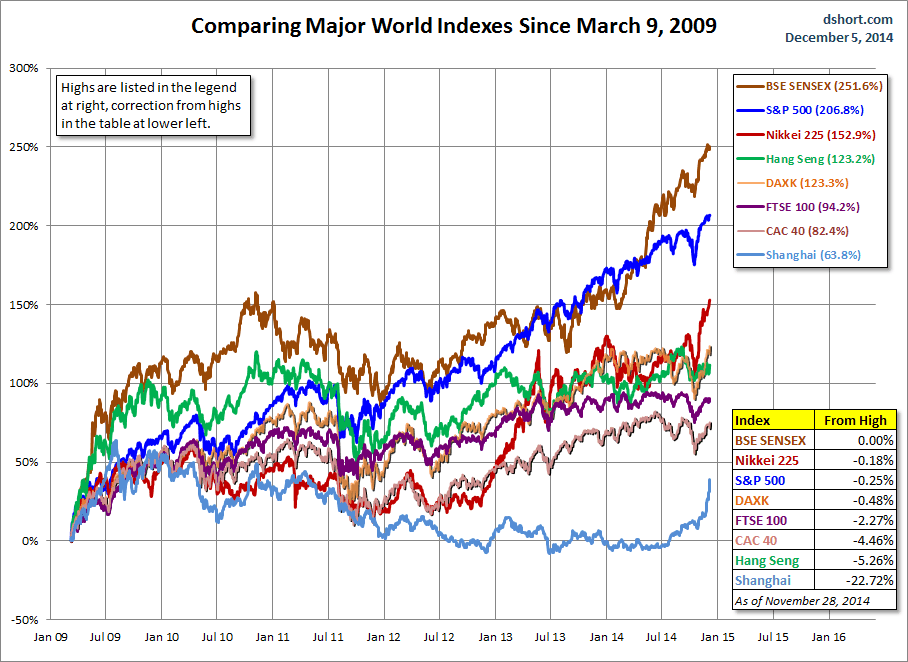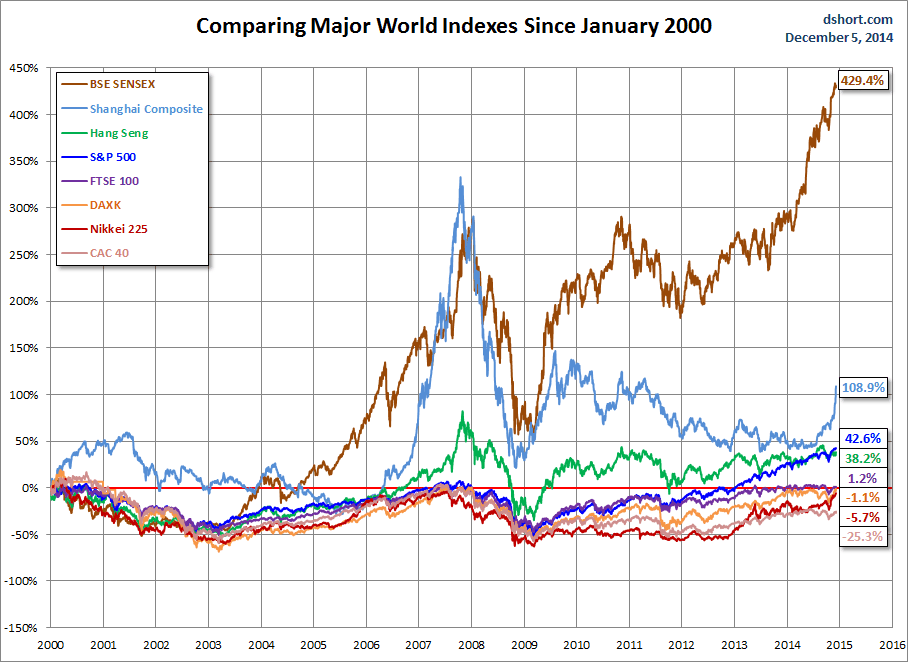The world market rally continued last week with seven of the eight indexes on my watch list posting gains. The attention grabber was again the Shanghai Composite, soaring above the others with a 9.55% advance, and this comes on top of its 7.88% gain the previous week. Japan's Nikkei 225 was a far distant second with its 2.64% weekly gain. Germany's DAX finished in third place, up 1.06%. The S&P 500 gained only 0.38% for the week, although two of the five sessions ended with record closes. India's Sensex was the sole loser, posting a -0.82% decline for the week.
Here is a look at 2014 so far:
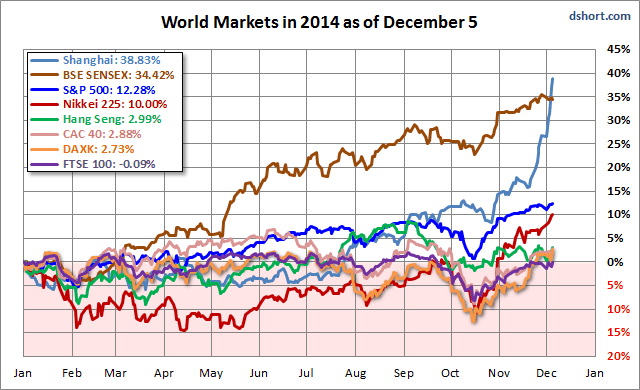
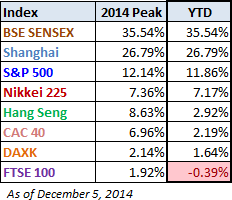
Above is a table highlighting the year-to-date index performance, sorted from high to low, along with the 2014 interim highs for the eight indexes. At this point, seven of the eight are positive YTD, and the one index in the red, the UK's FTSE 100, is only a hair's breadth from a 2014 gain. the US's S&P 500 and Germany's DAX both ended the week with record highs, and the Nikkei set a new interim high.
A Closer Look at the Last Four Weeks
The tables below provide a concise overview of performance comparisons over the past four weeks for these eight major indexes. I've also included the average for each week so that we can evaluate the performance of a specific index relative to the overall mean and better understand weekly volatility. The colors for each index name help us visualize the comparative performance over time.
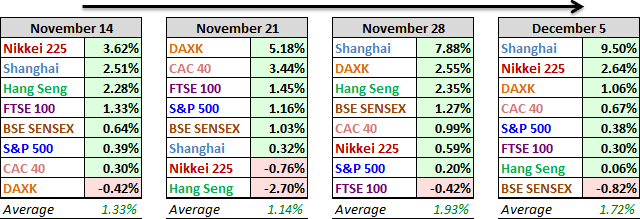
The chart below illustrates the comparative performance of World Markets since March 9, 2009. The start date is arbitrary: The S&P 500, CAC 40 and BSE SENSEX hit their lows on March 9th, the Nikkei 225 on March 10th, the DAX on March 6th, the FTSE on March 3rd, the Shanghai Composite on November 4, 2008, and the Hang Seng even earlier on October 27, 2008. However, by aligning on the same day and measuring the percent change, we get a better sense of the relative performance than if we align the lows.
A Longer Look Back
Here is the same chart starting from the turn of 21st century. The relative over-performance of the emerging markets (Shanghai, Mumbai SENSEX and Hang Seng) up to their 2007 peaks is evident, and the SENSEX remains by far the top performer. The Shanghai, in contrast, formed a perfect Eiffel Tower from late 2006 to late 2009.
Check back next week for a new update.
Note from dshort: I track Germany's DAXK a price-only index, instead of the more familiar DAX index (which includes dividends), for constency with the other indexes, which do not include dividends.
All the indexes are calculated in their local currencies.

